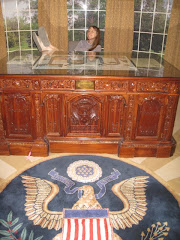Yesterday there was a 6.0 earthquake in Wells, Nevada which caused considerable damage.
(See http://earthquake.usgs.gov/eqcenter/recenteqsww/Quakes/us2008nsa9.php).
Thankfully there were no casualties. Although our family didn't feel it, (we are well over 100 miles away) it was felt in other areas of our neighborhood, and as far away as Idaho and California.
I lived in Japan for a few years. Japan lies on 4 tectonic plates, which is more than anywhere else in the world. (There are 7 major tectonic plates on earth.) So, you can imagine that earthquakes are no rare occurence. The first time I went I was an exchange student. I lived near Matsue in Shimane prefecture. I don't remember experiencing earthquakes then, but I was only there 6 weeks. When I returned to Japan as a missionary 5 years later, I had a much different experience.
This time I was living in Okazaki city (which is in Aichi prefecture). My missionary companion was chatting on the phone, and I was sitting by the portable heater across the room. All of a sudden, the whole building began to sway like a boat on a stormy sea. The hanging lights swung wildly banging the ceiling. It felt almost like sitting on shaking jello. No sooner had I realized what was happening than it was over. We thought it was fun and exciting, but chatting with locals the next day, we quickly learned that no one else held the same opinion.
There were dozens of earthquakes while I was there, but most were barely noticeable.
Some months after my first big earthquake, I was transfered from Okazaki to Takabata (near downtown Nagoya). Sister DiGidio and I were at the church with the Elders for district meeting. We were kneeling in prayer when another earthquake hit. This quake was much louder and rolling that the one I had experienced in Okazaki, and it lasted much longer. We were gathered around a ping pong table, which I didn't feel was exactly the strongest thing to protect us. Sister DiGidio didn't skip a beat. She just kept praying.
This quake was much stronger and had originated many, many miles away in Tottori.
So I thought it would be nice to share some earthquake safety information. I find this especially timely due to the fact that our old brick apartment is situated exactly on top of a fault along the Wasatch front.
Before a quake strikes, it is wise to have emergency kits for each member of your household. (See my blog about 72 hour kits. It was on Dec. 27, '07 along with information for how to store water). One of the most important things to have is water. The residents of Wells were left instantly without heat and water. What would you do in this situation? Remember that you are ultimately responsible for your own safety. Not the government, church groups or other organizations. So be prepared! You should also have a kit for your car including warm blankets, water and food. (There are other essential items you should have for your car, like a shovel in case you get stuck in the snow- but that's another topic).
Also, be sure and secure items in your home that may fall over during an earthquake such as televisions, computers, dressers and water heaters. I have listed some links at the end of the blog to help you get ready.
Okay, so the ground begins to shake, and you realize that you are in an earthquake. What do you do?
First of all, don't look up!! You may hear the sounds of glass breaking overhead, but injury can occur to your face and, worse, your eyes if falling glass hits you. Quickly drop to the ground and take cover under something sturdy. For example, get under a table and hold on firmly. You will be shaking around, so try and move with the quake. Stay away from windows or glass that may break (also mirrors and pictures). The exterior walls are the most dangerous, if you can't find a place to go, get to an interior wall and crouch down with your arms protecting your head.
If you're in bed when a quake strikes, stay in bed and cover yourself with a pillow.
During a quake, if you are inside, stay inside. If you're outside, stay outside. Most injuries from earthquakes are caused by falling debris. Stay away from tall, heavy furniture during a quake, hanging items, etc.
There is more information than I can list, so I will give you a fabulous link! Go to:
http://www.earthquakecountry.info/roots/step5.html
If you don't live in an earthquake-prone area, it is still a good idea to have disaster supply kits. You never know! And now, the other links I promised:
Here is a link from the Earthquake Country Alliance (from California) with some excellent information:
http://www.earthquakecountry.info/roots/seven_steps.html
Here's information to make your own car kit. It may not have everything you need, so please adjust accordingly.
http://drbenkim.com/emergency-car-kit.html
Here is some additional information for preparing for emergencies from the American Red Cross.
http://www.redcross.org/services/prepare/0,1082,0_91_,00.html
So, there you go. Let's prepare! Yay!
Subscribe to:
Post Comments (Atom)








No comments:
Post a Comment